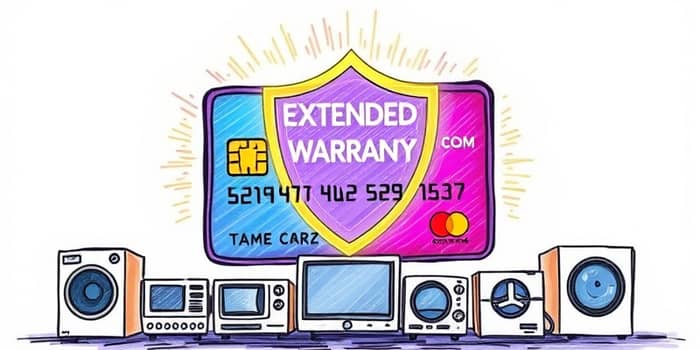
Consumers often overlook some of the most valuable perks attached to their credit cards, and among these hidden card perks often overlooked is the extended warranty benefit. By tapping into this free protection, you could replace a broken TV or fridge without spending extra on costly service plans. In this article, we will explore how extended warranties work, why they matter, and how to verify and maximize these benefits on your own cards.
A credit card extended warranty is a complimentary service that extends the manufacturer’s original protection period. Once the maker’s warranty expires, your card steps in, matching its terms exactly for up to an extra year or more on eligible items. This complimentary benefit that can add one or two years of coverage is typically automatic, but knowing the fine print can save you stress and money.
Most major issuers such as American Express, Chase, and Capital One offer this perk on their premium or rewards cards. The network or a third-party administrator handles claims, meaning you are reimbursed directly via statement credit or check when a covered item fails after the original warranty period.
In today’s world, we rely heavily on electronics and appliances, and replacements can be expensive. A sudden breakdown of a high-end smartphone or a refrigerator can disrupt daily life and strain your budget. With an extended warranty benefit, you gain peace of mind in every purchase and a life-changing financial safety net just by charging your item to the right card.
Statistics show that the average U.S. household spends over $1,400 per year repairing or replacing major electronics and appliances. If your card covers even one significant claim, you could save hundreds or thousands compared to store warranties or out-of-pocket costs.
Not every purchase qualifies. Typically, the following criteria apply:
Ineligible items often include real estate, automobiles, boats, used or rented goods, computer software, and medical devices. Accidental damage or wear and tear is usually excluded, so this benefit is best suited for manufacturer defects.
Confirming whether your credit card includes extended warranty protection is straightforward. Follow these steps to unlock purchase protection and peace of mind:
Some cards require you to register your purchase ahead of time, though most provide automatic coverage. Keeping a record of your transaction ensures a simple step-by-step claim process later on.
By adopting these habits, you turn a card perk into a powerful tool that safeguards your biggest purchases against unexpected failures.
Understanding these limitations helps you manage expectations and avoid surprises if a claim is denied. Always confirm specific terms with your issuer.
When your product malfunctions after the manufacturer’s warranty expires, here’s how to proceed:
1. Gather your receipt, credit card statement showing the purchase, and the original warranty paperwork. 2. Complete the claim form provided by your card’s benefits administrator. 3. Submit your documentation as directed—often via email or a secure portal. 4. Await the review and reimbursement via statement credit or check.
Claims are usually processed within a few weeks, offering you seamless support right when you need it.
Consider Sarah, a young professional whose laptop screen died months after the manufacturer’s warranty lapsed. Facing a steep repair bill, she discovered that her card offered an extra year of coverage. After filing her claim with her credit card’s administrator, Sarah received a full refund for the repair cost. This documentation needed for successful claims moment not only saved her over $300 but also reaffirmed how a life-changing financial safety net can brighten everyday realities.
Extended warranty benefits on your credit cards represent significant savings that ease financial burden and provide stress-free protection for your investments. By familiarizing yourself with the terms, tracking your receipts, and filing timely claims, you unlock a powerful layer of defense against unexpected breakdowns. Take a few minutes today to review your card’s Guide to Benefits—your future self and your wallet will thank you.
References













